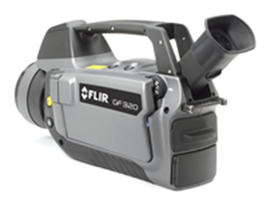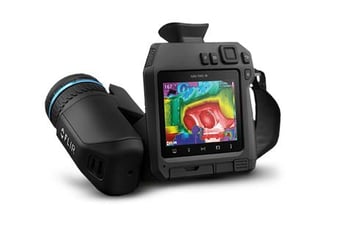Many chemical compounds and gases are invisible to the naked eye. Yet many companies work intensively with these substances before, during and after their production processes.
Strict regulations govern how companies are to trace, document, rectify and report any leaks of volatile gaseous compounds, and how often these procedures are to be carried out.
Earlier methods of gas detection required close or near contact using “sniffer” technology and probes.
The limitations of these methods are that they are time consuming and run a risk of missing gas leaks. They may expose inspectors to invisible and potentially harmful chemicals, and do not allow for wind and weather factors that can produce inaccurate measurements.
The FLIR Gas Detection cameras are infrared cameras which are able to visualize gas by utilising the physics of fugitive gas leaks.
The camera produces a full picture of the scanned area and leaks appear as smoke on the camera’s viewfinder or LCD, allowing the user to see fugitive gas emissions.
The image is viewed in real time and can be recorded in the camera for easy reporting.
The camera can be used to detect gas from many different sources in the petrochemical industry but some of the most common leak paths are from:
- Flanges
- Valve stems
- Plugs and Caps
- Machinery
- Couplings
- Pump seals
- Holes
- Passing valves
- Drain covers
- Instrument Connections
The list of gases which can be “seen” includes:
- Benzene
- Butane
- Ethane
- Ethylbenzene
- Ethylene
- Heptane
- Hexane
- Isoprene
- MEK
- Methane
- Methanol
The range of cameras now includes an ATEX certified model, the GFx320. Given the wide variety of applications, the cameras can also be fitted a range of lens, for example a 6 degree telephoto to enable the likes of flares to be viewed from a distance.


